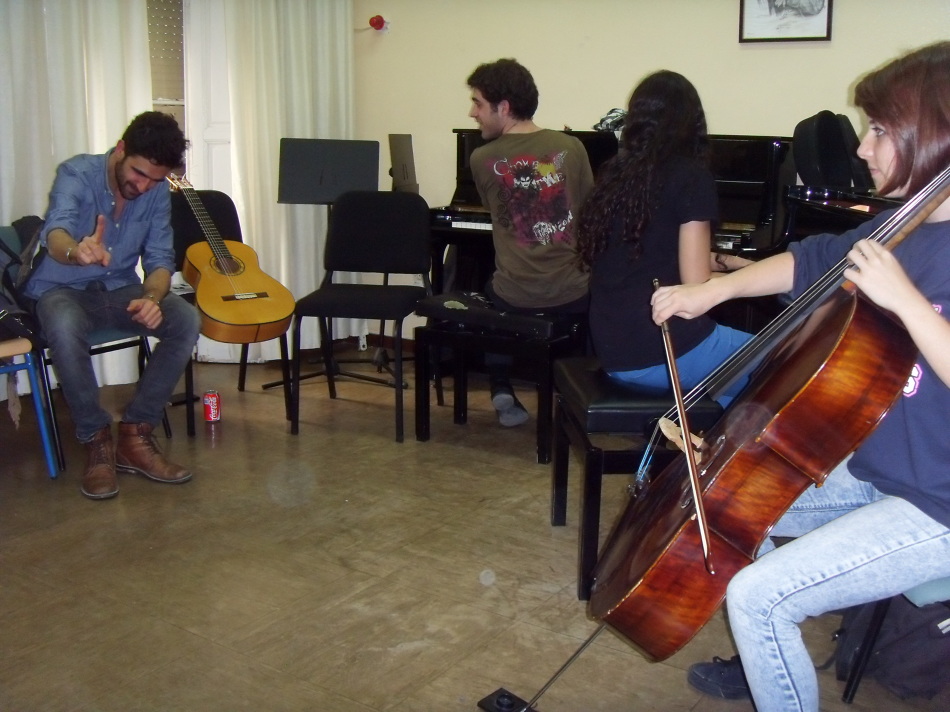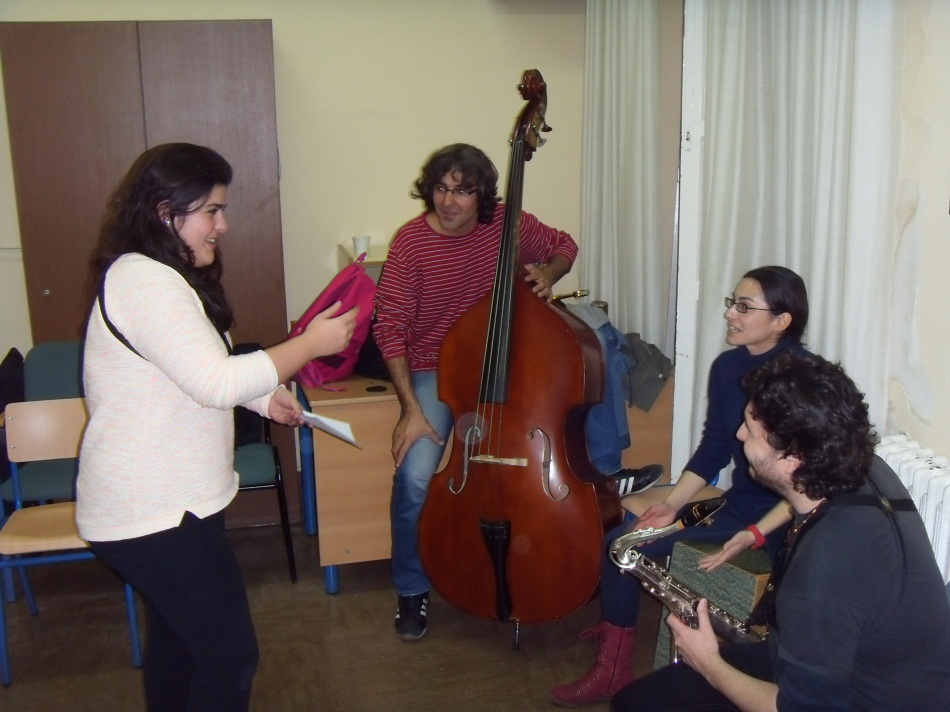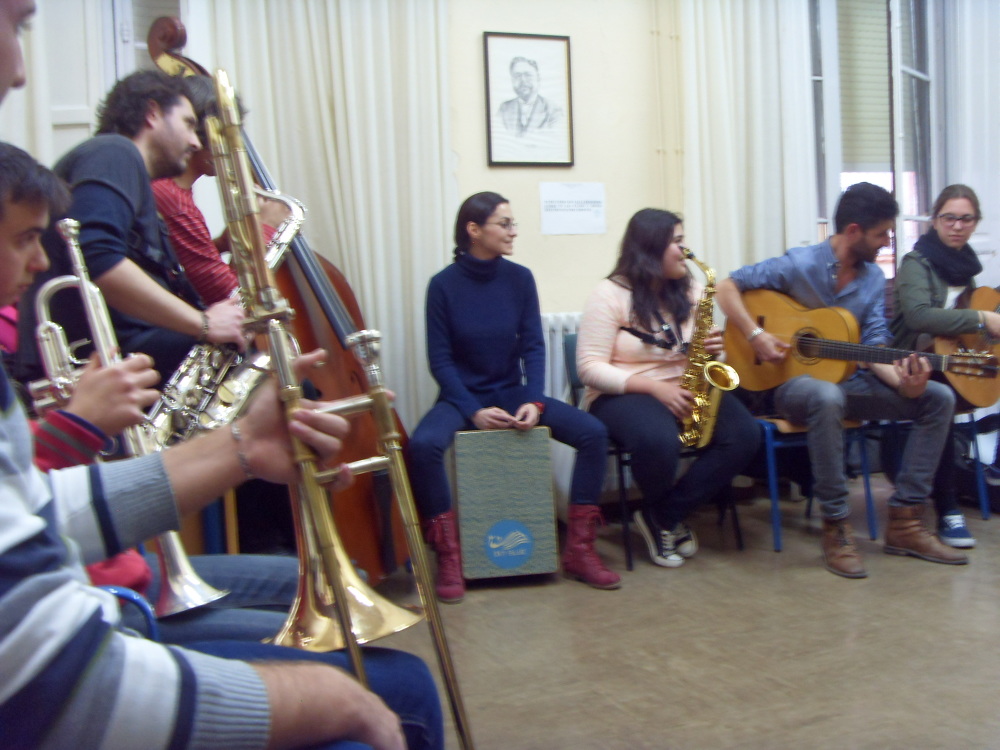Gran Imaginarium is a series of creative music workshops I led for Classical, Jazz and Flamenco students at the music conservatory in Seville, Spain.
In the wake of an economic downturn, the course was designed to offer graduating students ideas of how music can be used in the community aside from typical teaching or performance roles, and the tools to be able to implement the ideas. English vocabulary was introduced and practised to help those wishing to look for work abroad.
I used a range of ever evolving exercises and tasks to facilitate exciting creative processes, exploring group composition, arrangement, improvisation, rhythm training.
In this video the first piece of audio is an exercise in which a mode or scale is chosen, in this case A dorian. A pulse is introduced and all participants play a note of their choice from the mode, changing every 4 pulses. This creates changing ‘random’ chords inside the mode.
Moving clockwise around the circle, each participant takes it in turn to solo. The person before them stands and directs an accompaniment to the solo by choosing accompanists and using pre-determined hand signs and gestures.
Examples of basic hand signals are:
1 finger raised – the tonic note
2 fingers – a note of the player’s choice within the mode
3 fingers – any note of the player’s choice
By presenting the hand signal to a player, they know what you’re asking them to play and are ready to be directed. As a ‘director’ you can choose as many accompanists as you like.
Then by using gestures the accompanists are directed to play long notes, being led in and out, short notes or stabs, quietly, loudly, crescendo and diminuendo.
This can then be developed by using a hand signal to ask an accompanist for a repeating ‘riff’ or ostinato, directing others to join this ostinato by harmonising etc.
The idea is that although you don’t have complete control over the harmony of the accompaniment, you listen to the solo and try to compliment it.
We move around the circle until everyone has had a turn soloing and directing accompaniment.
The following exercise is one where participants are asked to choose a selection of on-beats and off-beats within 2 bars of slow 3/4 time. These are marked out as seen on the board in the video. The rhythms are explored and when one is decided on, we extract pitches from that rhythm by assigning a starting note, for example, D. Every whole beat represents a whole tone:

We now have a scale which we can choose how to apply to the rhythm. It can be played with each of the notes as they fall within the rhythm, or used to experiment, look for melodies, chords etc.
OTHER EXERCISES
Speech Investigations : I asked students to repeat sentences and encouraged them to analyse the melodic and rhythmic qualities. Smaller groups were then given a sentence each and an hour to work together on translating it into a musical piece.
Participants are asked to work in smaller groups and compose a small piece using this method.
The following recording is the result of a rhythmic exercise which also dictated notes and harmony. Smaller groups were assigned parts of the music to develop. For example; melodies, chord progressions and rhythmic structure and variations.
The following is a recording of a warm up exercise in which all participants sit in a circle with their instruments. Using eye contact only, they must find partners and begin a spontaneous improvisation which lasts until another group is formed and interrupts them.


